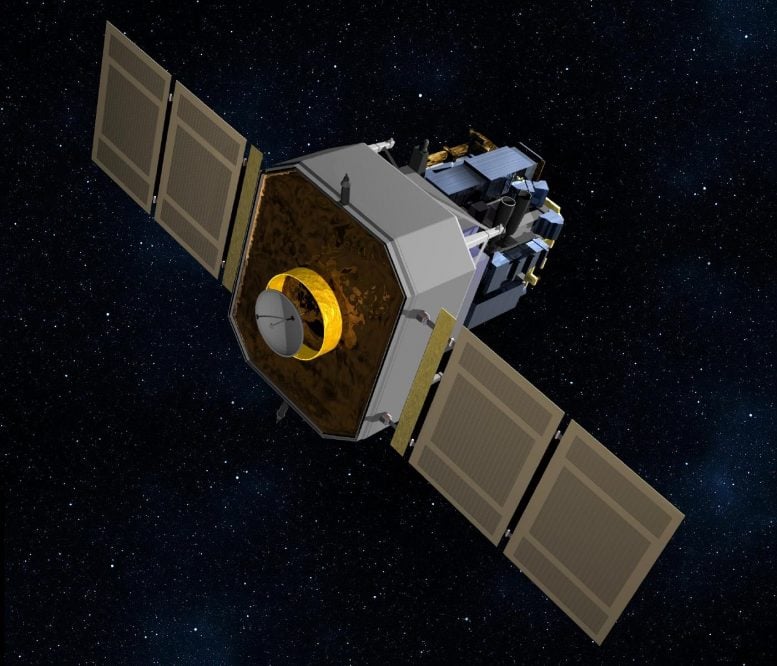
Spacecraft illustration — SOHO was launched in December 1995 by an Atlas Centaur rocket and became operational in March 1996. SOHO weighs about two tons and with its solar panels extended stands about 25 feet across. Credit: Alex Lutkus – ESA/NASA
The Solar and Heliospheric Observatory, a joint mission between the European Space Agency and NASA, was not designed to find comets — its original goal was to study the Sun from its deep core to the outer layers of its atmosphere. But building new observatories can thankfully bring in discoveries that are entirely unexpected. Nearly 25 years since its launch, data from this space-based solar observatory has led to the discovery of well over half of all known comets — upwards of 3,950 new comets found.
Though the SOHO team anticipated the spacecraft would discover some new comets, they never expected to find nearly 4,000 of them. The huge number of SOHO-discovered comets comes thanks to a combination of well-designed instruments, a long lifespan, the hard work of citizen scientists and a little bit of luck.
“SOHO is uniquely placed in space and uniquely designed, and it’s these aspects of the spacecraft that allow it to see and discover so many comets,” said Karl Battams, a space scientist at the Naval Research Lab in Washington, D.C.
SOHO carries an instrument called a coronagraph that uses a solid disk to block out the Sun’s bright face, revealing the much fainter outer atmosphere, the corona. Scientists use these images of the corona to study how this part of the atmosphere changes and to track occasional explosions of material from the Sun, called coronal mass ejections. SOHO’s vantage point between the Sun and Earth, about a million miles from Earth, gives it a constant view of the Sun’s atmosphere.
Until 1979, humans had spotted fewer than a dozen sungrazing comets. As of 2020, we know of around 4,000. This sungrazing comet boom is thanks to ESA (European Space Agency) and NASA’s Solar and Heliospheric Observatory. Credit: NASA’s Goddard Space Flight Center
SOHO’s coronagraph, known as LASCO, has both high sensitivity and a wide field of view, which turns out to be perfectly suited to see so-called “sungrazing comets” that fly too close to the Sun’s overwhelmingly bright face to be seen from Earth or with most other scientific instruments. And because SOHO has kept a steady eye on the corona – through which these comets fly — almost continuously for nearly 25 years, its data has revealed thousands of previously unknown comets: 3,953 as of May 2020.
Almost all of SOHO’s comet discoveries have come from its coronagraph data, but a small handful of comets have been discovered in images from a different instrument on board: the SWAN instrument, a camera designed to look for interactions between the solar wind and hydrogen atoms in space. Some comets, including Comet SWAN discovered in April 2020, outgas large amounts of water — of which hydrogen is the main component — as they approach the Sun, making them visible to SWAN.
Around 85% of the thousands of comets discovered by SOHO are members of one family of comets: the Kreutz group. The Kreutz sungrazers are thought to be the remnants of a single giant comet, which, some thousands of years ago, flew close to the Sun and heated up, loosening the ice that bound it together. It fragmented into thousands of tiny comets that we know today as the Kreutz family. These relatively tiny remnants — most are around the size of a house — follow the path of the original Kreutz comet.
SOHO’s data has proven a prime hunting ground for previously-undiscovered comets, but that doesn’t mean the going is easy. Most of the discoveries have been made through the painstaking work of citizen scientists with the Sungrazer Project, a NASA-funded project managed by Battams that grew out of early citizen science comet discoveries not long after SOHO launched in 1995.
“After word spread that scientists were seeing new comets in the SOHO data, people went to the SOHO website and downloaded the images themselves and found a bunch of comets that the scientists had missed,” said Battams. “It got to the point where the project team was overwhelmed with the number of reports, so they created the Sungrazer Project to act as the hub for these discoveries.”
If the rate of new comet discoveries continues at its usual pace, SOHO’s 4,000th new comet will likely be spotted sometime in summer 2020, according to Battams.
Comet Neat (Feb.16-20, 2003). Credit: ESA/NASA SOHO
The comets discovered in SOHO’s data have given scientists valuable insight into both comets as a whole as well as the environment they fly through. Because they fly so close to our star, most of the comets seen by SOHO don’t survive their trip around the Sun — they disintegrate near their closest approach because of the incredible heating caused by the intense sunlight.
“When SOHO sees a comet, nearly every single one of them is in the process of being destroyed,” said Battams. “In that way, SOHO’s data has given us a peek into the end of life of a comet.”
Beyond that, the comets spotted by SOHO can also act as celestial windsocks, revealing new information about the solar wind and solar atmosphere that they fly through.
As comets approach the Sun, they become enveloped in a tail of gases liberated from the comet by heating caused by the intense sunlight. Some of the gases in this bright tail are ionized and are buffeted by the magnetized solar wind and magnetic fields in the Sun’s outer atmosphere, giving scientists the opportunity to measure the conditions in this region that would otherwise be invisible from afar.
“We’ve used these images to validate models of the solar magnetic field and things like electron densities and temperatures,” said Battams. “There’s all kinds of unique science you can do by watching these icy bodies travel through this extreme environment.”
SOHO is a cooperative effort between ESA and NASA. Mission control is based at NASA Goddard. SOHO’s Large Angle and Spectrometric Coronagraph Experiment, or LASCO, which is the instrument that provides most of the comet imagery, was built by an international consortium, led by the U.S. Naval Research Lab in Washington, D.C.

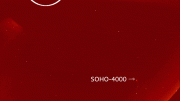
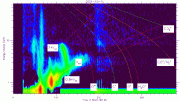
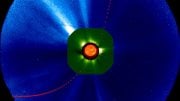
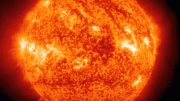
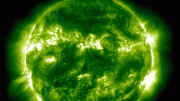
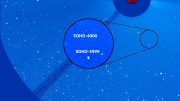
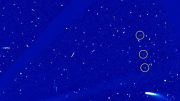
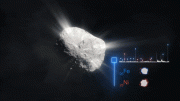
Be the first to comment on "ESA/NASA SOHO Spacecraft Has Discovered Thousands of Comets – What Makes It So Good at It?"